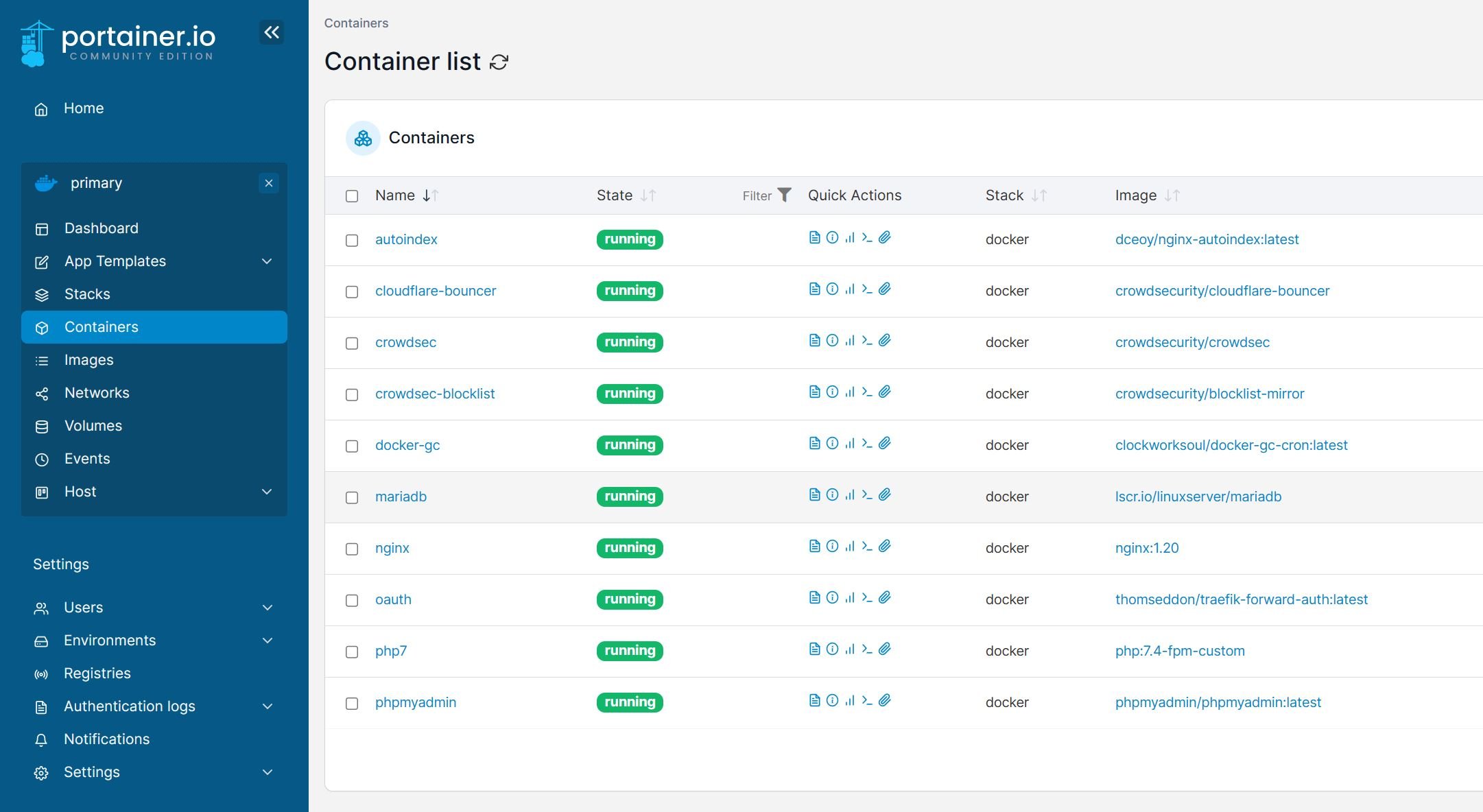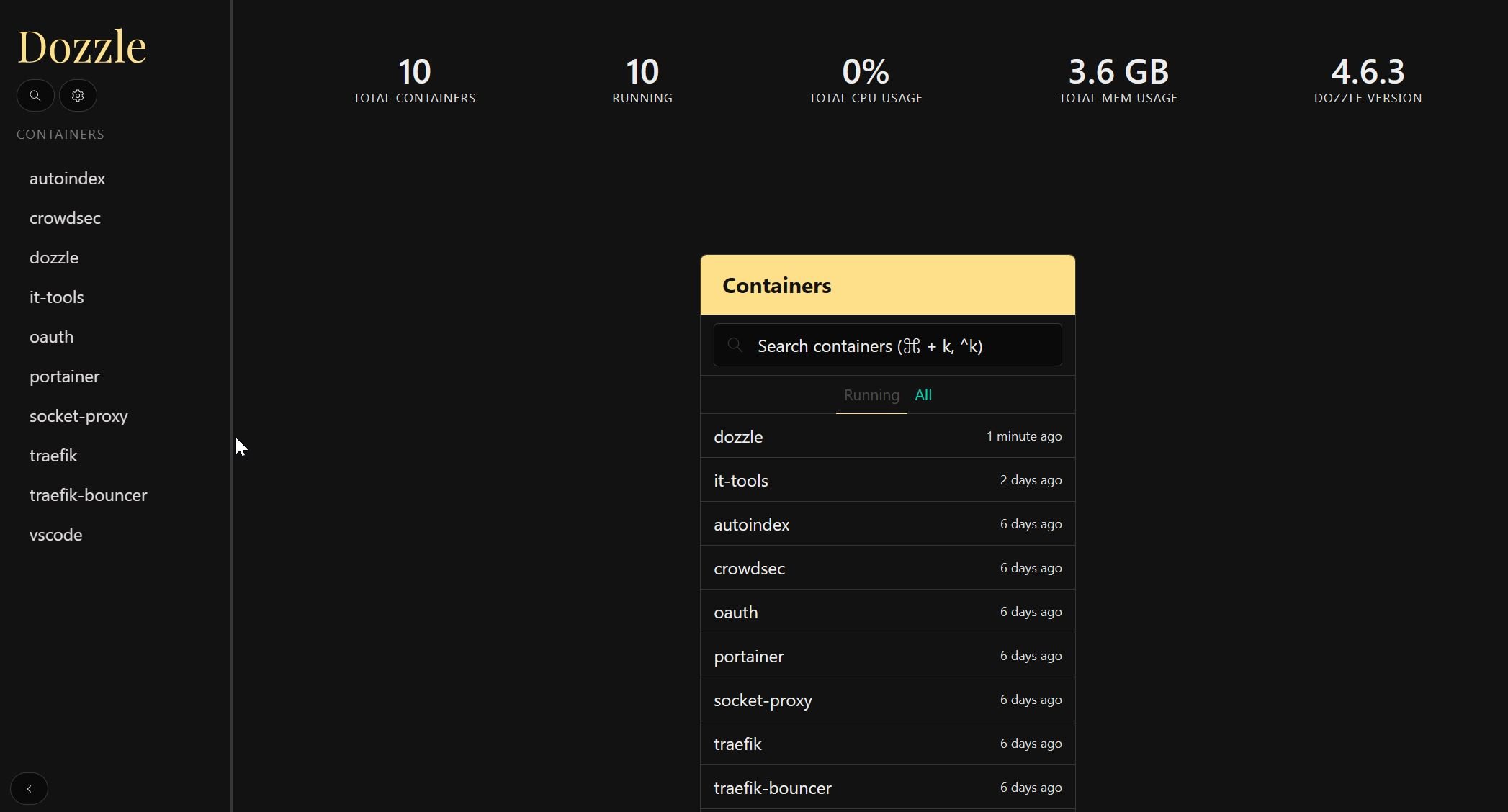We have previously covered Synology Docker topics in detail. Our objective with this QNAP Docker post is also to help QNAP NAS users to get started with building Docker Compose stacks.
The inclusion of Docker in NASes took brands like Synology and QNAP to the next level because, a whole new world of containerized applications could not be run on NASes. [Read: 60+ Best Docker Containers for Home Server Beginners]
In addition, QNAPs are one of the best NAS devices for Plex Media Server.
One is not just restricted to the limited set of apps available through the NAS maker or its community.
In the case of QNAP, Container Station is what allows you to jump into the world of Docker.
Table of Contents
- QNAP Container Station
- FAQ
- Final Thoughts on QNAP Docker Compose
QNAP Container Station
Container Station is the official QNAP app for virtualization, supports LXD, Kata, and naturally Docker, has a very neat interface and is absolutely easy to use.
We can search, choose and download images or applications, directly from the Create menu, OR use the power and versatility of docker-compose and click Create Application to obtain a new ready-to-write YAML file.
![Ultimate QNAP Docker Compose and Container Station Guide [2023] 2 The Create Tab, Used To Install New Container Or Create New Application](https://www.smarthomebeginner.com/images/2023/05/ContainerStationApp-740x417.png)
The list used to retrieve the images and applications is nothing but a Github repository, that can be changed from the application Preferences.
Of course, it's possible to Export/Import containers, but for the sake of lazyness practicality, we're going to use only one YAML file to rule them all.
Last but not least, docker engine and compose are automatically installed with the app, so everything needed is packed together. This a great plus compared to Synology, which requires separately installing Compose using commandline.
1. Install Container Station
It's downloadable from the App Center, if not already installed.
![Ultimate QNAP Docker Compose and Container Station Guide [2023] 4 Qnap Container Station App Install](https://www.smarthomebeginner.com/images/2023/05/ContainerStationInstall-740x444.png)
After QNAP Container Station Download, during the first run, we'll be asked which folder will be used for storing application data. By default a shared folder named Container is automatically created, otherwise, we could choose or create another one. In this tutorial I used the default folder.
![Ultimate QNAP Docker Compose and Container Station Guide [2023] 5 Qnap Container Stations Default Folder](https://www.smarthomebeginner.com/images/2023/05/ContainerStationInstall2-740x416.jpg)
Start Now and Container Station is ready.
Quick check, just to verify that our user has permission to read/write inside the "Container" folder, from "Control Panel", "Shared Folder":
![Ultimate QNAP Docker Compose and Container Station Guide [2023] 6 Qnap Shared Folder Permissions](https://www.smarthomebeginner.com/images/2023/05/FolderPerm-740x382.jpg)
Click on the Edit shared folder permission button, of the Container folder, and check if our user is included in the user list and has correct permission:
![Ultimate QNAP Docker Compose and Container Station Guide [2023] 7 Include User In The Permissions List](https://www.smarthomebeginner.com/images/2023/05/FolderPerm2-740x229.png)
As my user is in the administrator's group, I'm fine, but if not, we could add the user by pressing the Add button.
![Ultimate QNAP Docker Compose and Container Station Guide [2023] 8 Add User To Folder Permissions](https://www.smarthomebeginner.com/images/2023/05/FolderPerm3-1.png)
Then, select the user from a list, setting the right permission:
![Ultimate QNAP Docker Compose and Container Station Guide [2023] 9 Select User To Give Privileges To The Shared Folder](https://www.smarthomebeginner.com/images/2023/05/FolderPerm4.png)
3. Enable SSH Access on QNAP
Now, we need to connect the NAS through SSH. If SSH has not been activated before, we need to do it from Control Panel->Telnet/SSH.
Tick "Allow SSH connection", then click on "Edit Access Permission" and select the user you want to use for the connections.
We could also tick "Enable SFTP" to be able to manage files with clients like Filezilla. [Read: 30 Best SSH Clients for Windows [2022]: Free and Paid]
4. Upgrade Docker Compose (OPTIONAL)
Now that everything is ready, we can SSH into our NAS, move to the folder location of docker-compose and download its latest version from here, based on the CPU architecture:
# Show the CPU architecture uname -m # Move into docker-compose binary folder cd /share/CE_CACHEDEV1_DATA/.qpkg/container-station/usr/bin/.libs/ # Download wget https://github.com/docker/compose/releases/download/vx.xx.x/docker-compose-linux-xxxxxx
Just to prevent things from going wrong, we'll make a backup copy of the actual docker-compose binary with another name, rename the new one and assign it the right owner, group and permission:
sudo bash # Backup copy mv docker-compose docker-compose-old # Rename new binary mv docker-compose-linux-xxxxxx docker-compose # Changing owner, group and permissions chown admin:administrators docker-compose chmod +x docker-compose chmod 755 docker-compose # Check compose version docker-compose -v
The result should be something like this:
So, in my opinion, the best thing to do is letting Container Station do all this kind of works for us.
5. Create Folder Structure
To setup the folder structure used by Anand (Find it here), we first need to create an additional group, where the only member is the admin, and use it to set the right permissions for the secrets folder and the .env file.
Different names, same functions.
We're gonna do it from the "Control Panel", "User Groups", because AFAIK there's no terminal command to create a new group:
Click on "Create" and fill the field with the group name, I used admindocker, assign ONLY admin user to the group and no assignation of folder is needed as the admin already has access to all the filesystem.
![Ultimate QNAP Docker Compose and Container Station Guide [2023] 14 Create Group For Docker Containers On Qnap](https://www.smarthomebeginner.com/images/2023/05/Group2-740x384.png)
After this, SSH into NAS and go to the folder where "Application" (A.K.A compose stack) data are saved, and create a folder:
# Move to data folder cd /share/Container/container-station-data/application # Create a new folder mkdir FolderName cd FolderName # Create folder structure using Anand's tutorial mkdir ... ... touch ... ... # Change .env file and "secrets" folder permission, owner and group chmod 600 .env chmod 600 secrets sudo bash chown admin:admindocker .env chown admin:admindocker secrets
If we want to edit the file directly from SSH, VIM is an option (already installed on QNAP NAS but not really user friendly).
Other options, depending on the operating system used, are SCP/SFTP clients:
Populate the .env file and secrets folder with all the stuff that you need, and jump to the next step! You can follow Anand's Docker Guide as reference.
6. Change Default QNAP Ports
AND FINALLY, we're ready to create our compose stack.... Well, actually almost ready, because if we plan to include containers that need standard ports 80 (HTTP, QNAP Web Server) or 443 (HTTPS), like Traefik reverse proxy, we must edit QNAP settings, as these ports are already used:
In "Control Panel", "System", "General Settings", "System Administration", we have to change the "System port" (HTTP) from 80 to another free port number (8000 for example) and, if secure connection is enabled but I'm pretty sure it is, also change the "Port number" (HTTPS) from 443 to another free port number (4430 for example).
![Ultimate QNAP Docker Compose and Container Station Guide [2023] 15 Change Qnap Nas Default System Ports](https://www.smarthomebeginner.com/images/2023/05/Port-740x381.png)
Same thing for the QNAP Web Server, if enabled, "Control Panel", "Application", "Web Server":
![Ultimate QNAP Docker Compose and Container Station Guide [2023] 16 Change Qnap Nas Web Server Ports](https://www.smarthomebeginner.com/images/2023/05/WebServer-1-740x454.png)
7. Create Compose Stack with Container Station
No more tricks, time to open Container Station, click on "Create" and "Create Application":
![Ultimate QNAP Docker Compose and Container Station Guide [2023] 17 Build Docker Compose Stacks On Qnap](https://www.smarthomebeginner.com/images/2023/05/Stack1-740x413.png)
And >>BOOM<<, here it is our YAML file, ready to be written.
Did you remember the name of the folder we created moments ago?
Good, that's the name that goes in the "Application name" field, to be able to use the folder structure, .env file and secrets folder.
When a new "Application" is saved, Container Station creates a new folder inside "/share/Container/container-station-data/application" using the name given in the "Application name" field and stores there the docker-compose.yml file.
If the folder has already been created, it simply stores the YAML file inside it, and leaves its structure unaffected.
The "Sample" drop-down includes three already compiled YAML files:
- WordPress
- Redmine
- PostgreSQL
Once we finish, we need to click "Validate YAML", "Create" and, if everything is fine, stack building should start:
![Ultimate QNAP Docker Compose and Container Station Guide [2023] 19 Qnap Docker Stack Creation In Progress !](https://www.smarthomebeginner.com/images/2023/05/Stack3-740x56.png)
Our compose stack has been created, we could see it from the "Container" tab: the green cubes icon means that the stack is up and running, the grey one that is stopped, we could stop, restart, edit and delete the stack using the menu on the right.
That's all for now with our QNAP docker compose journey.
!BONUS TRACKs!
I guess you all know what a bonus track is:
A bonus track (also known as a bonus cut or bonus) is a piece of music which has been included as an extra.
and like musicians, I want to add some extra to this tutorial, arguments that are not strictly related to the main topic, but could help reaching our goal easily.
Enjoy!
! Installing nano as text editor on QNAP NAS !
! autorun.sh Edit !
I'm not crazy, I told you I wouldn't have covered the argument on the tutorial, and I'm not going to cover it, BUT if you really really really want, or need, to edit the autorun.sh, here's a link from QNAP with all the information.
HAVE FUN!
FAQ
Can QNAP run Docker?
Yes, most modern QNAP NASes can run Docker. The Docker package also include Docker Compose. But the versions can be slightly older.
Where are QNAP containers stored?
QNAP container data are stored in the default folder defined during Container Station Installation (e.g. /share/Container/container-station-data/application).
How to install container station on QNAP?
QNAP container station is a downloadable app from the App Center, if not already installed.
Final Thoughts on QNAP Docker Compose
I think that Container Station is the fastest solution for having a compose stack on QNAP NAS, without the risk of many headaches.
Couple of caveats I want to report are:
- When you create a new "Application" with a single container inside, you cannot edit the YAML file once saved.
- If you create and bring up your compose stack directly from command line, you'll be able to see it from Container Station but you cannot control from it, plus containers won't autostart upon reboot/shutdown (you need to edit the autorun.sh script, but I won't cover the process in this tutorial).
Otherwise, I hope that this QNAP Container Station and Docker Compose guide helps you get started. Don't forget to check out the Traefik Reverse Proxy guide.

![Ultimate QNAP Docker Compose and Container Station Guide [2023] 1 Qnap Container Station](https://www.smarthomebeginner.com/images/2023/05/ContainerStation-740x417.png)
![Ultimate QNAP Docker Compose and Container Station Guide [2023] 3 Repository For Docker Images](https://www.smarthomebeginner.com/images/2023/05/ContainerStationRepo-740x416.png)
![Ultimate QNAP Docker Compose and Container Station Guide [2023] 10 Qnap Ssh Access](https://www.smarthomebeginner.com/images/2023/05/SSH-740x383.png)
![Ultimate QNAP Docker Compose and Container Station Guide [2023] 11 Enable Ssh On Qnap](https://www.smarthomebeginner.com/images/2023/05/SSH2-740x366.png)
![Ultimate QNAP Docker Compose and Container Station Guide [2023] 12 Qnap Docker Compose Version](https://www.smarthomebeginner.com/images/2023/05/ComposeVersion.png)
![Ultimate QNAP Docker Compose and Container Station Guide [2023] 13 Qnap Group Creation](https://www.smarthomebeginner.com/images/2023/05/Group-740x384.jpg)
![Ultimate QNAP Docker Compose and Container Station Guide [2023] 18 Qnap Docker Compose File](https://www.smarthomebeginner.com/images/2023/05/Stack2-740x482.png)
![Ultimate QNAP Docker Compose and Container Station Guide [2023] 20 Qnap Docker Stack Status](https://www.smarthomebeginner.com/images/2023/05/Stack4-740x416.png)
![5 Best NAS with SSD Cache for Home and Office [2023] A feature image that shows all 5 of the best NAS that supports SSD caching for home and office](https://www.smarthomebeginner.com/images/2023/10/best-nas-with-ssd-cache-feature-image.png)


![Ultimate Docker Server: Getting Started with OS Preparation [Part 1] Docker Server Tutorials 1 OS Preparation](https://www.smarthomebeginner.com/images/2024/01/Docker-Series-01-Intro-and-OS-Prep.png)

![8 Best NAS with Plex Server Support [2022] - 4k, Transcoding, etc. Best NAS Server for Plex](https://www.smarthomebeginner.com/images/2020/02/best-media-server-for-plex-ft.jpg)